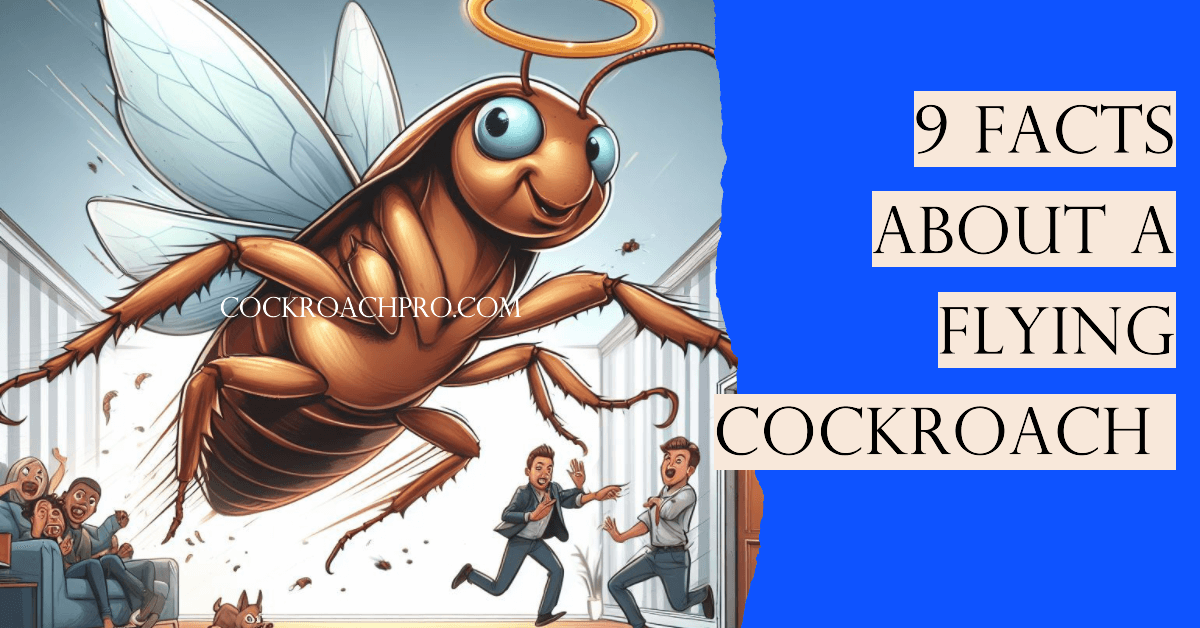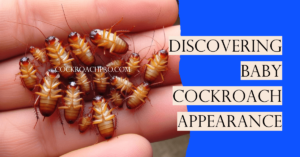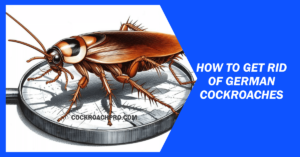A flying cockroach can wreck havoc in your office or in your house and it can even scare away your visitors but fear not because help is here.
Cockroaches, often reviled and underestimated, are truly remarkable creatures. It’s easy to cringe at the sight of these insects, but within their diverse species, there exists a subset that possesses a surprising ability: flight. These flying cockroaches are far more intriguing than one might imagine.
These creatures, known for their hardiness, belong to a group of insects with over 4,000 species worldwide. While the mere mention of cockroaches might conjure images of scuttling pests, it’s important to distinguish between the species that take to the skies and those that remain grounded.
In this article, we’ll delve into ten intriguing facts about these airborne pests.
What is a flying cockroach?
A flying cockroach is a cockroach that is capable of flight. While not all cockroach species have the ability to fly, some have developed wings that allow them to take to the air for short distances. The term “flying cockroach” typically refers to these winged cockroaches.
It’s important to note that when flying, cockroaches are not the most graceful fliers; their flight is often characterized by erratic and clumsy movements.
And why they fly?
They usually resort to flying as a last-ditch effort to escape danger or when they need to cover a short distance quickly. These flying cockroaches are still the same insects as their non-flying counterparts, but they possess wings that give them an additional means of mobility.
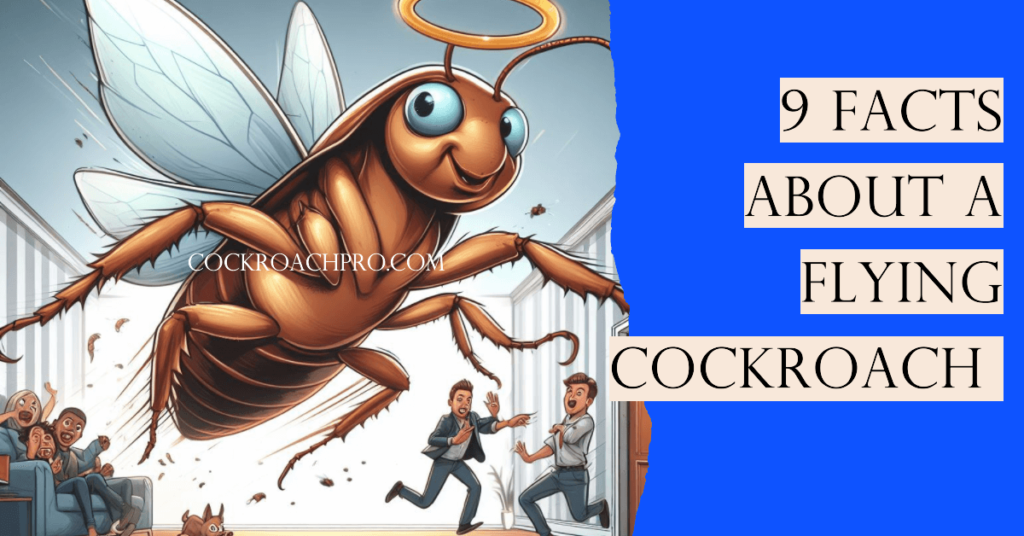
9 Fascinating Facts About flying cockroach
Let’s dig in these facts and also give you some tips on how to get rid these flying cockroaches
Fact 1: Not All Cockroaches Fly
First and foremost, not all cockroaches are equipped for flight. With a staggering variety of over 4,000 cockroach species worldwide, only a minority among them possesses the remarkable ability to take to the skies.
Cockroaches come in various shapes and sizes, and not all of them have wings. Some common species, like the American cockroach, possess wings and can fly, while others, like the German cockroach, lack functional wings altogether.
Fact 2: Flying Cockroaches Have Wings
Flying cockroaches may not be the most graceful aerial acrobats, but they do indeed possess wings. Unlike the elegant flight of birds or butterflies, the cockroach’s wings are rather translucent, which is a fascinating aspect of their biology.
These wings serve a vital function in the life of a cockroach, even if their flight isn’t exactly a display of elegance. While they might not be the most efficient flyers, these wings enable them to cover short distances and navigate their environment effectively.
So, the next time you observe a flying cockroach, take a moment to appreciate the intricate design of their wings, which, despite not making them the champions of the skies, are a testament to their unique adaptability.
Fact 3: Flight Is Often a Last Resort
One of the most intriguing aspects of flying cockroaches is that flight is often their last resort. In the face of imminent danger, they unfold their wings and, in a somewhat clumsy manner, take to the air in an attempt to escape. It’s like their own version of an emergency exit strategy.
This behavior showcases that flying is not their primary mode of transportation. Instead, they rely on their quick legs to scuttle around efficiently.
Related: Do cockroaches bite?: The Truth Is Revealed Today
The act of flying for a cockroach is a clear indication that they feel cornered and are desperately seeking safety. So, next time when you see a flying cockroach, remember that it’s their ultimate escape plan kicking into action, rather than a leisurely flight around your space.
Fact 4: Flying Cockroaches Are Not Great Fliers
It’s a common misconception that flying cockroaches are graceful flyers, but the truth is quite the opposite. These insects are far from being skilled aviators. Their flight is marked by erratic, zigzagging movements that can lead to unintended collisions with objects and surfaces.
This lack of precision sets them apart from more agile flying insects. In the air, flying cockroaches often appear as if they’re learning to navigate on the fly, which makes them less efficient compared to their counterparts.
So, if you’ve ever witnessed a flying cockroach careening around your space, rest assured that their aerial skills are far from perfect, which might offer a bit of consolation when dealing with their unexpected presence.
Fact 5: Flying Cockroaches Are Fast
While flying cockroaches may not be aerial maestros, they more than make up for it with their remarkable speed when they’re grounded. This agility on the ground is a crucial survival trait. When they’re not airborne, these insects can scuttle away from potential threats with impressive speed, leaving you in awe of their agility.
Next time you’re amazed by the swiftness of a cockroach making a hasty retreat on the floor, remember that their need for speed on the ground is a key part of their strategy for survival. Despite their awkward flight, they’ve evolved to be quick and elusive when it truly matters.
Fact 6: They Can Carry Disease
Flying cockroaches can be a cause for concern due to their potential to carry and transmit diseases. These insects often dwell in unsanitary environments, and their ability to roam about freely increases the risk of disease transmission.
Their habit of frequenting areas where bacteria and pathogens thrive means they can easily pick up disease-causing agents on their bodies. When they venture into our living spaces, they can unknowingly transfer these harmful microbes to our surroundings, posing health risks.
So, it’s not just their appearance that makes them unwelcome guests; it’s their role as potential disease carriers that should keep us on our guard.
Fact 7: Cockroaches Are Ancient Insects
Cockroaches are not just creepy-crawlies; they’re living relics from the past. These remarkable insects have a history that stretches back to the time of dinosaurs, showcasing their incredible evolutionary journey.
Their ability to adapt and endure through millennia is a testament to their resilience. They’ve weathered the test of time, surviving through countless changes in the Earth’s climate and ecosystems.
So, the next time you come across a flying cockroach, take a moment to appreciate their ancient lineage and their remarkable ability to thrive in the modern world, reminding us that nature’s wonders often come in unexpected forms.
Fact 8: Flying Cockroaches Are Omnivores
Flying cockroaches are true opportunists when it comes to food. They are omnivores, which means they have a versatile and diverse diet that includes both plant and animal matter. This adaptability in their food choices is a key factor in their ability to thrive in a wide range of environments.
From nibbling on decaying leaves and other organic matter to scavenging for scraps and even preying on smaller insects, flying cockroaches are not picky eaters.
This adaptability has allowed them to carve out a niche in ecosystems worldwide. So, while they might not be the most welcome guests in our homes, their omnivorous tendencies make them highly adaptable survivors in the natural world.
Fact 9: Flying Cockroaches Are Nocturnal
Ever wondered why you tend to spot cockroaches scurrying around your kitchen late at night? Well, it’s because these insects are primarily nocturnal creatures. They’ve perfected the art of hiding during the day and become active when the cloak of darkness provides them with the safety and cover they need.
This nocturnal behavior is a key survival strategy. It allows them to avoid many of their natural predators and carry out their foraging and mating activities under the protective veil of night. If you find a flying cockroach in your kitchen after dark, you’ll know they’re simply following their natural rhythm as night owls of the insect world.
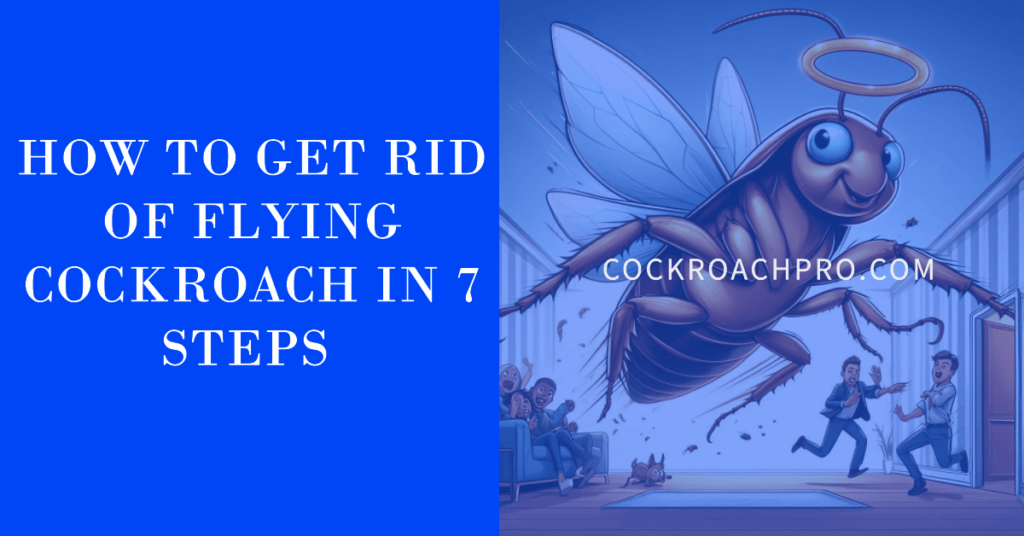
how to get rid of flying cockroach in 7 steps
To get rid of flying cockroach in your home, consider these effective steps:
1. Seal Entry Points
To get rid of a flying cockroach It’s crucial to maintain a cockroach-free home by conducting a thorough inspection for any cracks or gaps around your doors, windows, and walls. These tiny openings can serve as welcoming entry points for those unwanted flying cockroaches.
Seal them up efficiently, and you’ll be well on your way to ensuring a pest-free environment. By taking this simple yet effective step, you can reduce the chances of these winged visitors finding their way inside your living spaces, allowing you to enjoy a cockroach-free home with peace of mind.
2. Maintain Cleanliness
Maintaining a clean and cockroach-free kitchen is crucial in keeping these pests at bay. Cockroaches are drawn to food sources, so it’s essential to be diligent in your cleanliness efforts. Store your food in airtight containers to deny them easy access to their next meal.
Additionally, promptly cleaning up crumbs and spills not only keeps your space hygienic but also removes the temptations that might attract these unwanted guests.
By adopting these simple practices in your kitchen and dining areas, you’ll create an environment that’s far less appealing to cockroaches, reducing the likelihood of them setting up camp in your home. So, remember, a tidy kitchen is your first line of defense against these pesky intruders or flying cockroach.
3. Eliminate Standing Water
To keep your home free from the presence of flying cockroach, it’s important to be vigilant about water sources and leaks. Cockroaches not only seek out food, but they also require water to survive.
Therefore, promptly fixing any leaks or addressing potential water sources in your home is crucial in denying them the hydration they need. By eliminating these opportunities for water access, you’ll make your living space less inviting for these unwelcome insects, further fortifying your defenses against their presence.
4. Remove Clutter
Maintaining a clutter-free environment is a practical strategy for keeping flying cockroaches in check, particularly in areas where you’ve noticed their presence. Cockroaches tend to thrive in dark, hidden spaces, making cluttered areas an ideal hiding spot for them.
By decluttering and organizing these spaces, you not only reduce their potential hiding spots but also make it easier to spot and address any cockroach issues.
It’s a simple yet effective way to reclaim control over your living space and discourage these pests from making themselves at home. So, roll up your sleeves, declutter those corners, and let the light in to keep flying cockroach at bay.
5. Use Cockroach Baits and Traps
Strategically placing cockroach baits or traps in areas where you’ve spotted these pesky insects can be a smart move in your battle against them.
These baits and traps are designed to attract cockroaches with enticing scents, and once lured in, they become trapped, reducing the population in your home. Be sure to position them in the cockroach’s common hiding spots, like beneath kitchen cabinets, along baseboards, or in dark corners.
These handy tools can be a valuable ally in your fight against flying cockroaches, and they provide a non-toxic and convenient method of control. Regularly check and replace them to ensure their continued effectiveness, helping you to maintain a pest-free living space.
6. Apply Insecticides
In the event of a severe cockroach infestation, it may be necessary to resort to cockroach-specific insecticides. These products are formulated to effectively combat these pests. However, it’s very important to follow the manufacturer’s instructions to the letter. Pay close attention to application guidelines, safety precautions, and recommended usage frequency.
Moreover, exercise extra caution if you have pets or children in your home. Keep them away from treated areas, and consider using child- and pet-safe insecticides if available. When used responsibly and in line with guidelines, insecticides can be a powerful tool in addressing a severe cockroach problem, ultimately restoring a pest-free and safe living environment.
7. Consult a Pest Control Professional
If you find that a persistent or extensive cockroach infestation is beyond your control, it’s wise to seek the expertise of a pest control professional. These professionals are equipped with the knowledge and tools to thoroughly assess the situation and provide effective, targeted treatment.
By enlisting their help, you not only increase your chances of completely eradicating the cockroach problem but also ensure that the methods used are safe and compliant with local regulations.
Pest control experts can offer valuable guidance on preventive measures as well, helping you safeguard your home against future infestations. So, when faced with a stubborn cockroach issue, don’t hesitate to reach out to the pros for efficient and long-lasting solutions.
small flying cockroach
A small flying cockroach, often referred to as a “baby” or “young” cockroach, can be just as concerning as its larger counterparts. Despite their size, these juvenile cockroaches have the potential to grow into full-sized, problematic pests.
They possess the same abilities, including flight, as adult cockroaches, although their wings might not be fully developed. It’s very important to address the presence of small flying cockroaches promptly to prevent them from reproducing and establishing a more significant infestation in your home. To get rid of them follow the instructions above.
flying cockroach in house
Encountering a flying cockroach in your home can be quite an unsettling experience. These insects are renowned for their ability to take flight when they feel threatened or are in search of food and shelter. When facing the presence of a flying cockroach, it’s crucial to maintain composure.
Try to confine and observe the cockroach’s movements within a single room, if possible. If you decide to handle it directly, using gloves or a paper towel is a good idea, but exercise caution, as they can be remarkably swift and unpredictable.
Once you’ve secured the cockroach, you have the choice of either releasing it outdoors or disposing of it using a sealed container or by flushing it down the toilet.
To minimize the likelihood of future encounters with flying cockroaches, it’s advisable to adhere to the preventive measures mentioned earlier, such as sealing entry points, maintaining cleanliness within your home, and deploying traps or baits as needed.
Keep in mind that the presence of a single flying cockroach does not necessarily signify an infestation, but taking proactive steps can help ensure your home remains free from these unwelcome guests.
when the cockroach starts flying
When a cockroach takes flight, it typically does so as a last-ditch effort to escape perceived danger or disturbance. These insects are not graceful flyers; rather, their flight is characterized by erratic, zigzagging movements. You might witness a flying cockroach when you approach it suddenly, attempt to catch it, or if it feels cornered.
Flight serves as an emergency escape mechanism for them, rather than a primary mode of transportation. So, if you see a cockroach taking to the air, it’s a clear sign that it’s feeling threatened and is desperately trying to find safety.
Final word
Flying cockroaches, while often considered unwelcome guests, possess unique characteristics and behaviors that make them a fascinating subject of study.
These insects demonstrate remarkable adaptability, using flight as an emergency escape mechanism when threatened, and thriving in various environments due to their omnivorous nature.
Their ancient lineage, dating back to the time of dinosaurs, highlights their resilience and ability to withstand the test of time.
To manage and prevent encounters with flying cockroaches in your home, it’s crucial to maintain cleanliness, seal entry points, and utilize traps or baits. However, if you face a severe infestation, seeking professional pest control assistance is advisable.
Remember, while they might evoke discomfort, flying cockroaches are a testament to the diverse and incredible world of nature, showcasing the intricacies of survival and adaptation.

